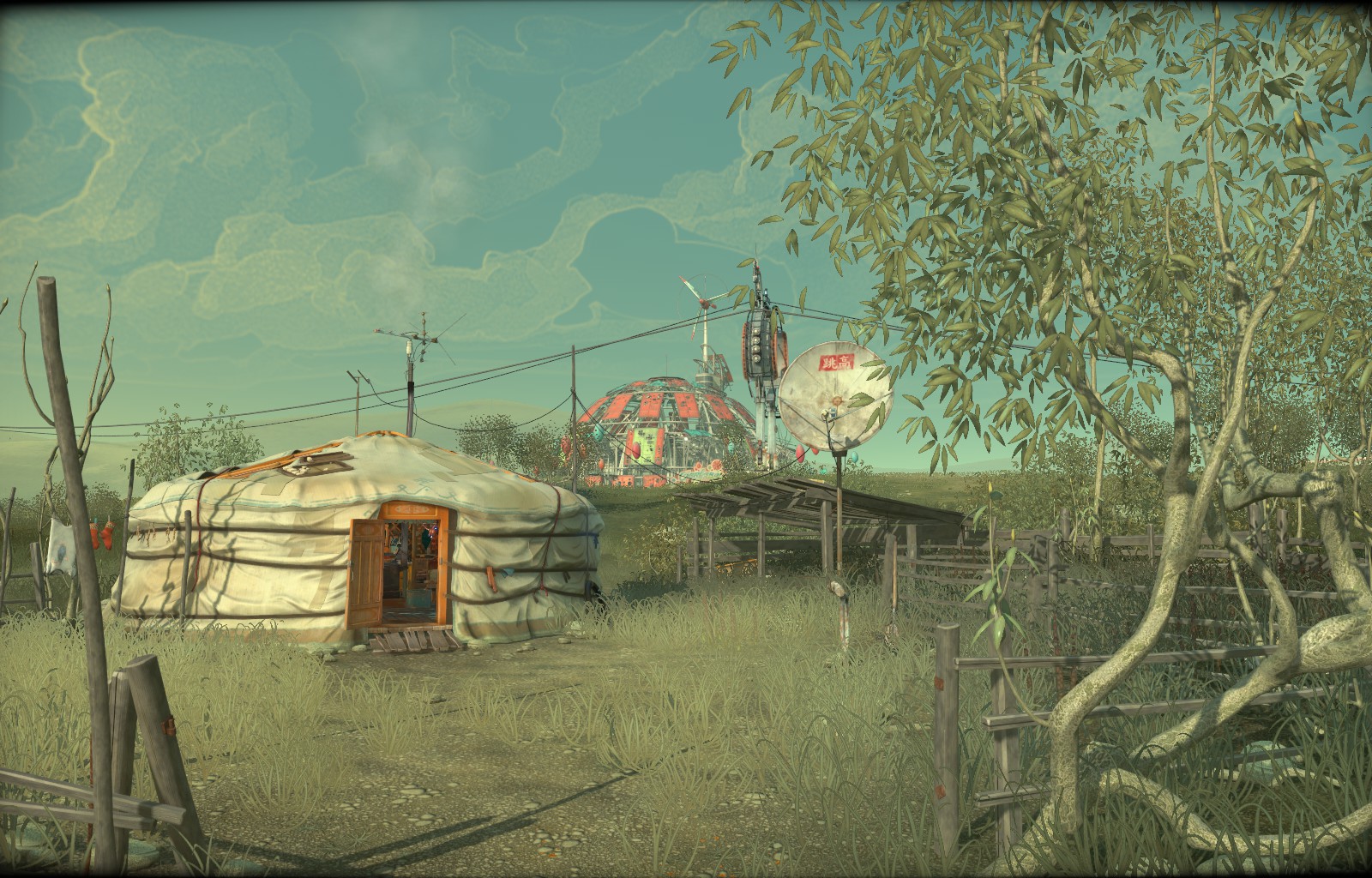I was curious about Cradle since I first learned of it many moons ago. Quest games aren’t my forte, but they, it’s a weird future steppe, a flying train, a mysterious dome and a sexy android lady. Only took me seven years, but I did it! I played this narrative-heavy first-person quest , finished it, and wrote a review that will definitely hurt the SEO rankings.
In Cradle, you play a future Mongolian guy. He awakens in a yurt with no memory of himself. It’s up to you to familiarize yourself with the environment and follow the hints that will allow you to recall who you are – and to ascertain what the sexy android vase you see in the promo art has to do with anything.
Amnesia: The Mongolian Descent
If I had to reduce an already short game to a bite-sized snack, I’d say Cradle is the walk that had to be taken before SOMA could run. That would be the perfect metaphor had SOMA not been released mere months after Cradle. Oops.
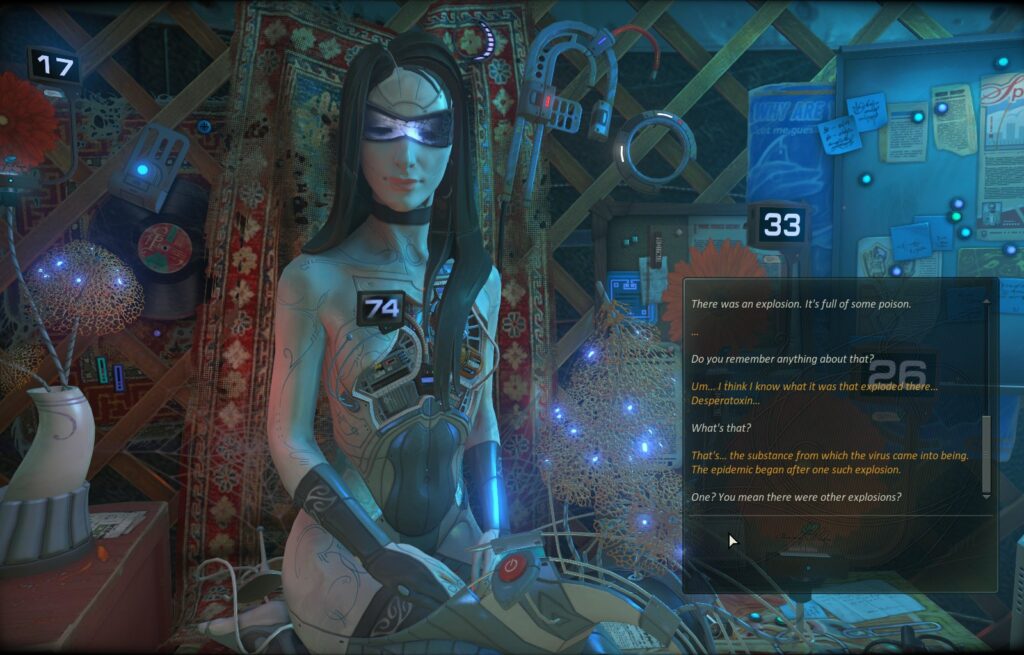
From the similar approaches to gameplay to a sharing of themes lightly touched upon in the game, Cradle is SOMA without the horror. It also has a scoop of Nier Replicant in the plot. For me, the tinge of anime in worldbuilding, isn’t unexpected. As a Lithuanian, I’ve played – or shown interest in – in quite a few games developed to the east of Germany. And it has always been the case that the devs around these parts were a bit more lyrical, philosophical, or outright weird than their western counterparts. Maybe we don’t yet have the heavy hand of capitalism to bring uniform blandness to our narratives. Maybe there’s just something different to the nerd culture here.
Ethno-essentialist reveries aside, the general gameplay of Cradle doesn’t offer anything new or weird. As a first-person quest game as your targeting reticle will happily morph to indicate that you’ve found an interactive element. You can pick up a lot of stuff and throw it around if that pleases you – and it works a lot more organically than in, say, Skyrim or Dishonored. The way stuff doesn’t go into the inventory automatically on pick as well as effortless throw ability gives a certain tactile feeling to the gameplay. You also have a limited size inventory, the holding capacity of which will rarely be challenged.
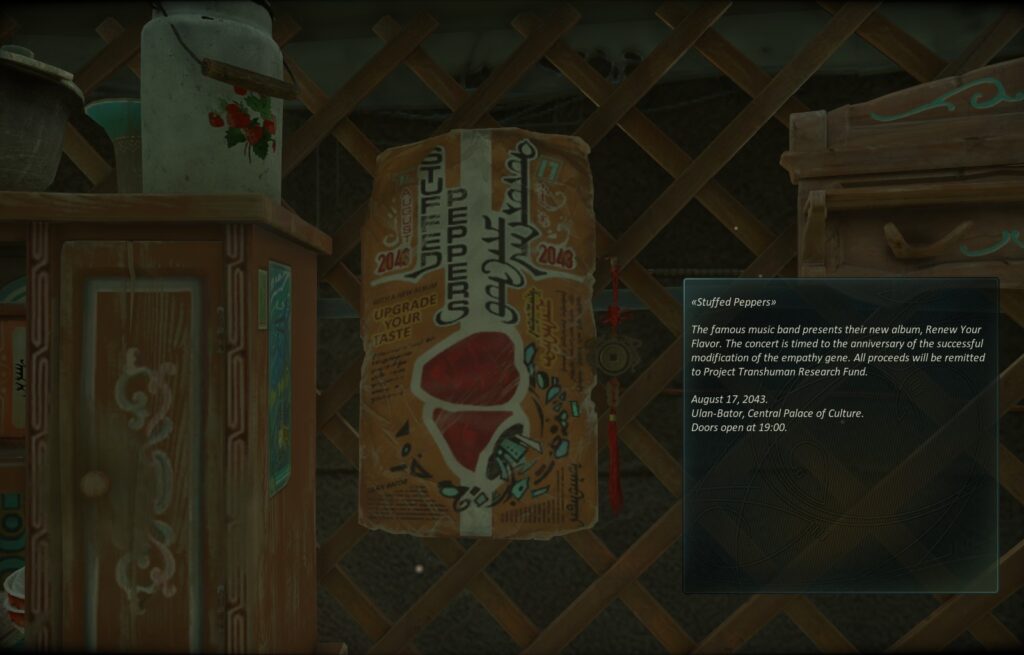
If I were to reach for a more mixed comment of the game, it would be in regard to the documents. Cradle has a lot of stuff to read. 90% of that stuff shows up as the same flat texture of trash on the yurt’s floor, walls, and furniture. In other games, you wouldn’t even guess that they’re in any way interactive. But the ever-helpful reticle shifts once you go over them, so you can learn about stuff from the underpinnings of the sci-fi weirdness presented in the setting to what the various Mongolian stickers are about. It’s neat that the developers put so much effort producing all of those documents – but a shame they couldn’t make them stand out more.
Riddle me this, Bayalag
Cradle mostly revolves around solving puzzles, often with plenty of hints and entirely avoidant of the moonlogic that plagued quests in the 90s. The game is also merciful when it comes to you misplacing items essential for quests. Each story beat is loaded like a new chapter, thus all the gear necessary for the next step is loaded back into its proper place. Thus, softlocking yourself via carelessness seems hardly possible. However, sometimes the solutions will be too clear or too-well telegraphed to provide a challenge.
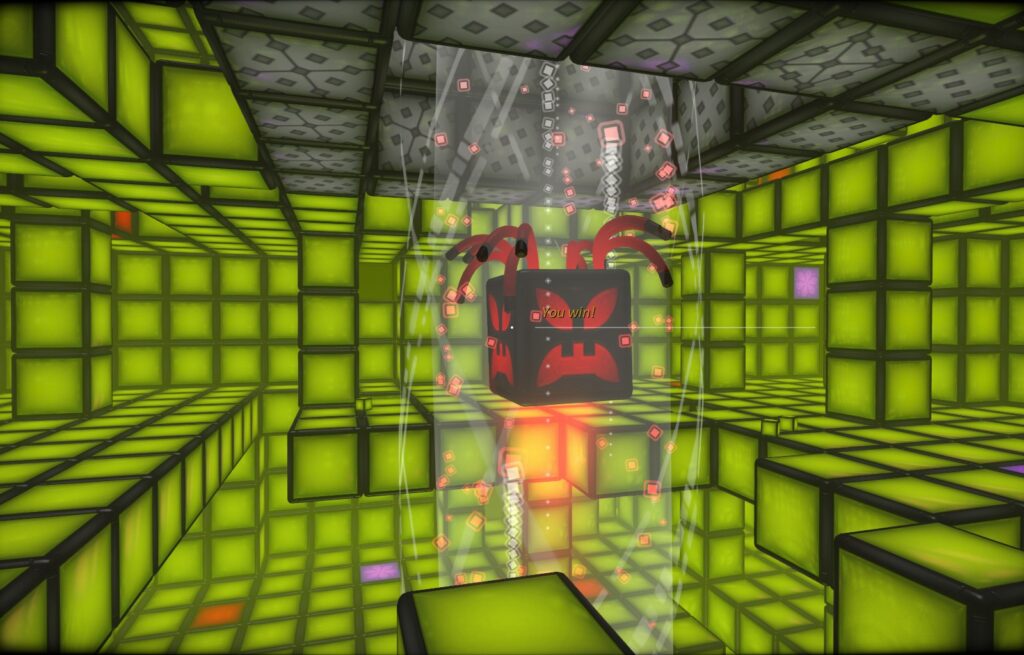
Let’s talk about the outright worst part of the game: the pavilion challenges. You complete those to acquire parts necessary to advance the story. Cradle will make you, over the course of the plot, to go into these puzzle minigames three times in a succession that’s too rapid for you to forget how annoying it was the last time.
. A Steam reviewer put it more gracefully than I can: you’re mining diamonds above lava in Minecraft while under periodical attacks from creepers. These puzzles are not fun, they just take up time and annoy the player. Nearly everyone complains about them in reviews, and with good cause.
Cradle starts out fairly well and has some fairly interesting quest design, but the pavilion quest just spit all the creativity in the face. Reminds me of GTA 2 and how every faction in the second city had the same lazy mission: “go to the territory of [enemy faction] and kill 60 dudes [to tank your relationship with them to the point where they chase you with heavy weapons].”
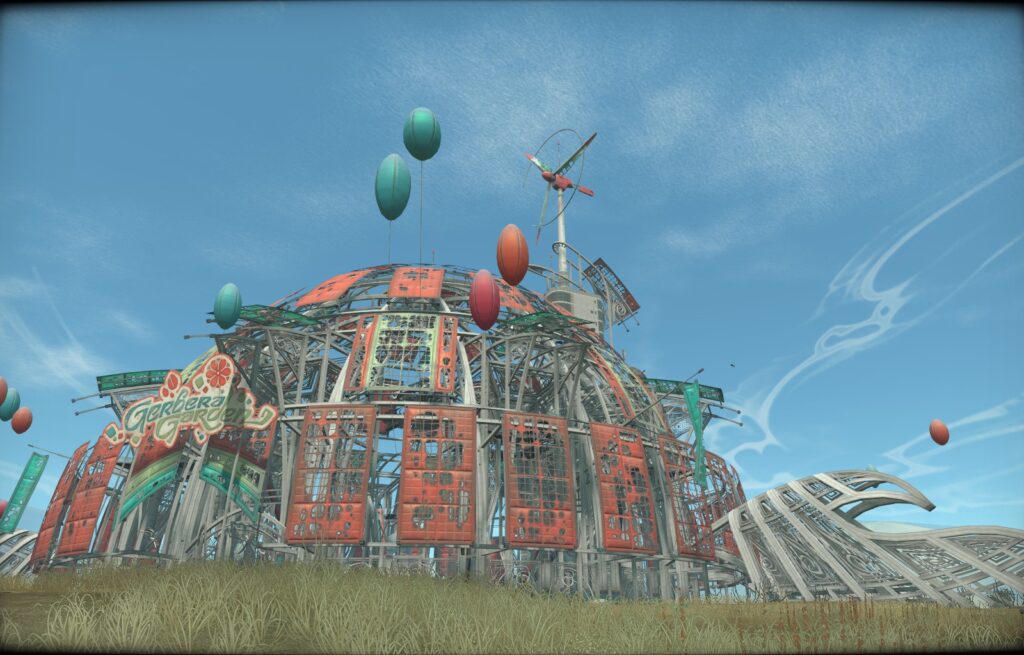
It’s just a very obvious sloppy game design choice meant to extend playtime. The main joy of Cradle is in exploring your techno-Mongolian and learning about this world. The yurt is full of these small surprises and lived-in details, rewarding you for exploration and curiosity. The pavillion challenges break away from all that: visually, their starkness contrasts to the detailed outside world, their place in the lore feels shoehorned, and the challenges depend more on your reflexes than any ability to think.
The cat’s in the Cradle with the nanotube
But if I wanted to outline a very good game design choice, I’d talk about FMV eyes. For reasons I won’t spoil here, the androids in Cradle have screens where their eyes would be, and those screens show a recording of a flesh-and-blood actor’s eyes while the rest of the head is 3D rendered. . The robot faces are entirely devoid of expressions, so all the emotion has to be conveyed through the eyes.
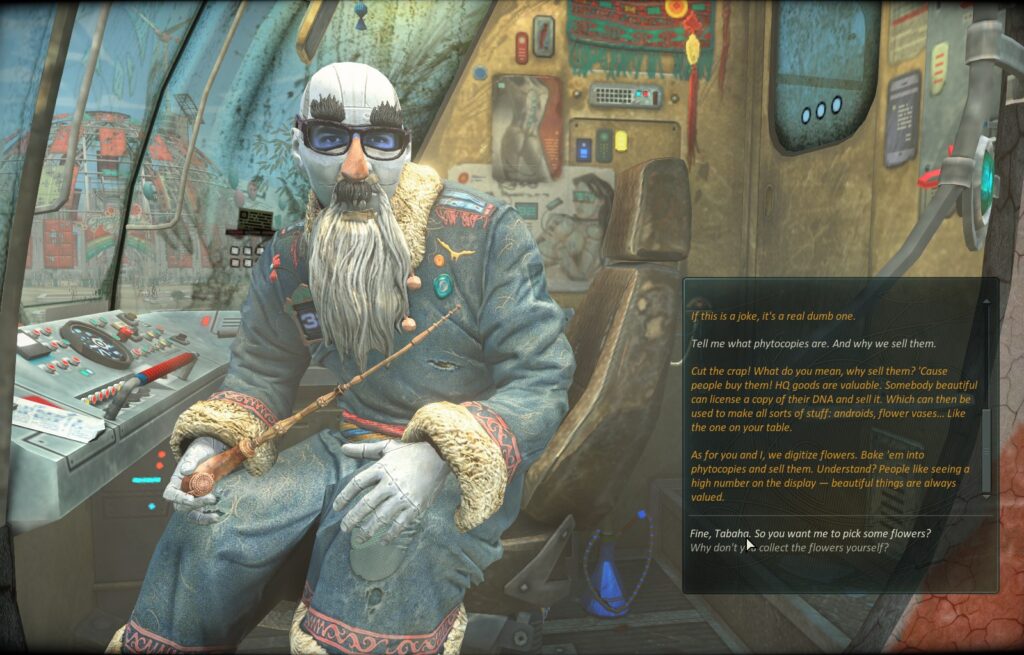
This works perfectly. The eyes are one of the most expressive features of the human face, and combining those expressions with the android body language makes the characters in the game very lively. It also saves oodles of budget money without resorting to attempts to animate faces (which is oft a big ask even from AAA studios) or leaving the robots entirely expressionless. It’s an ingenious solution; your game should steal it. Come on, everyone’s singing praises for FMV games these days. Just find a good reason to do androids with FMV eyes.
Wide as the open steppe
Now, I don’t know if you’ve noticed this, but most of my review sings praises to the yurt, barely mentioning any other locations in the game.. That’s because it’s the most impressive, well done area in Cradle, and you’ll definitely spend most of your run time there. It’s a wonderful mix of ancient Mongolian stylings, old furniture, all sorts of domestic utensils and some of the comforts of the ultramodern life. This blend reminds us that the march of technological progress isn’t some Civilization-type era-upgrade that automatically replaces anything old with the new (and, implied, better).
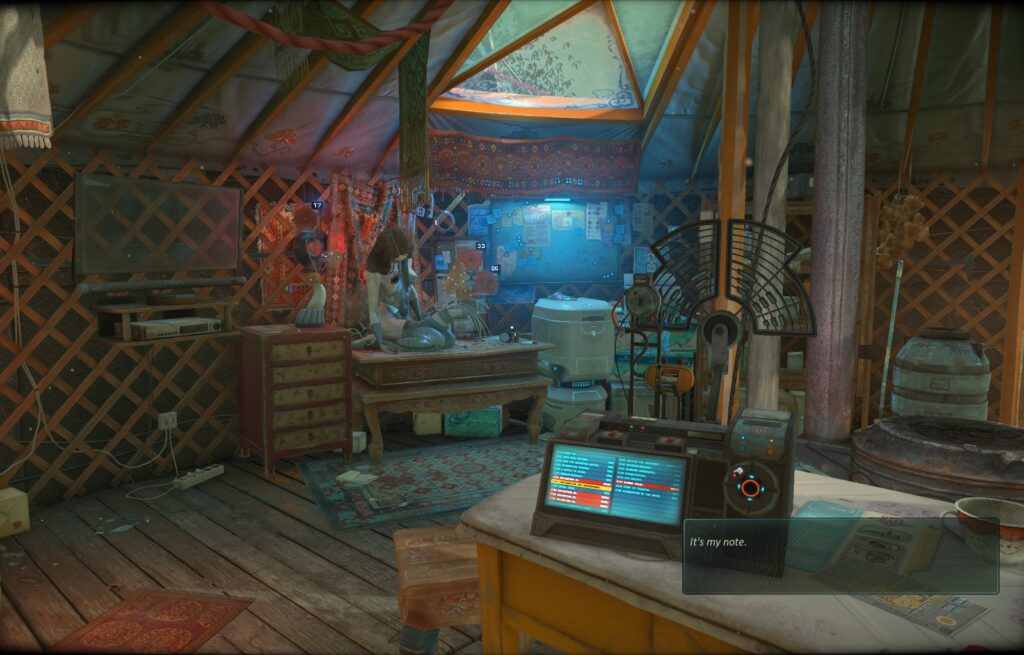
In contrast, the steppe and the dome you see in the promo material can barely compare. Outside of objects relating the story, they’re barely there, like two stepsons of the development cycle. Oh sure, the steppe is quite large, but you won’t visit 80% unless you really like taking stupid walks for your stupid mental health. And while it may be uncouth to demand a steppe be less flat and featureless – those being essential qualities of a steppe – it doesn’t invite or reward exploration. The dome is much more important to the plot, and thus more disappointing once you’re inside. The attention to detail – as well as the desire to detail the environments – seems to have evaporated once the devs started working on the interior. It’s as if they put stuff necessary to move the plot through gritted teeth, and then bounced back to the yurt..
And that’s when they hit you with the first Minecraft puzzle.
And my enthusiasm for Cradle vaned massively once the ending came. It felt very abrupt and out of place. It’s also confusing enough that the developers were aware of it – that’s why the closing cutscene is preceded by a montage highlighting which pieces of paper you have to read in the yurt to understand what’s happening.
Game OK
Nevertheless, it’s not the ending that makes me wary of recommending Cradle. It’s the damn puzzle sections. If you can find a cheat code or a mod to skip them, then fine, buy the game on a sale and spend a few hours exploring the impact of modernity and tradition, of human living and digitization of consciousness, and the society that produces sexy android vases. . After all, it’s so rare to find cyberpunk games not set in the same Neon Sprawl City, and games in taking place in Mongolia are rarer still. But those Minecraft puzzles respect your time a lot more than me not keeping this review under a page long.

